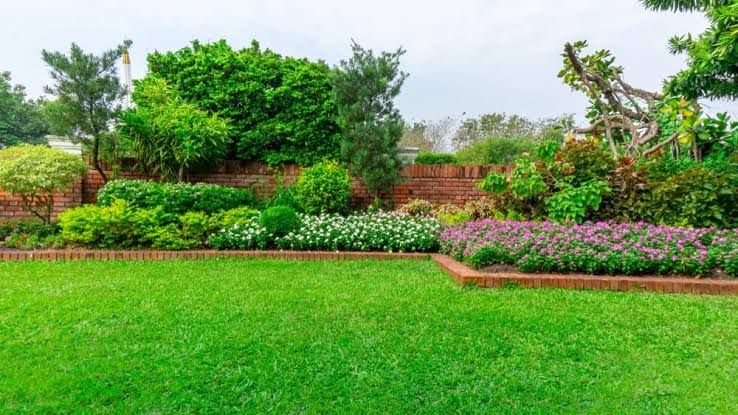Exploring the World of Garden Edging: Insights from GardenEdgingExpert.com/Blog
Introduction: Why gardenedgingexpert.com/blog Matters
When it comes to landscaping, gardenedgingexpert.com/blog is often an overlooked element that can make a world of difference. Whether you have a sprawling estate or a tiny urban garden, the way you define your planting beds can transform the look of your outdoor space. At GardenEdgingExpert.com/blog, we delve deep into the nuances of garden edging—why it’s important, the various materials available, and expert tips to achieve that polished look. So, let’s dig in!
The Basics of gardenedgingexpert.com/blog
What is gardenedgingexpert.com/blog?

At its core, garden edging is any material used to create a boundary around your gardenedgingexpert.com/blog. This can range from decorative stones and bricks to metal and wood. Edging serves both functional and aesthetic purposes. Functionally, it helps prevent grass and weeds from encroaching on your flower beds, keeping your garden looking neat and tidy. Aesthetically, it adds a finished look to your landscaping, providing contrast and framing for your plants.
Types of gardenedgingexpert.com/blog Materials
There are several types of materials to choose from when it comes to gardenedgingexpert.com/blog. Here’s a quick rundown:
Wood: Natural and warm, wooden edging can create a rustic charm in your gardenedgingexpert.com/blog. It’s easily customizable but may require regular maintenance to prevent rot.
Stone: Whether you opt for large boulders or smaller pebbles, stone offers a timeless elegance. It’s durable and can withstand various weather conditions, making it a popular choice.
Metal: For a sleek and modern look, metal edging is hard to beat. Available in various finishes, metal can create clean lines that enhance contemporary gardenedgingexpert.com/blog.
Plastic: Affordable and easy to install, plastic edging can mimic more expensive materials while being lightweight and flexible. It’s perfect for those who want a quick solution without breaking the bank.
Concrete: For a long-lasting option, concrete edging provides stability and structure. While it can be more challenging to install, the results are often worth it.
Choosing the Right Edging for Your gardenedgingexpert.com/blog
When selecting the right edging for your gardenedgingexpert.com/blog, consider factors like climate, the style of your home, and your budget. Think about the long-term maintenance each material requires, too. A more durable option might save you time and money in the long run, while a less expensive choice could require replacement sooner than you’d like.
Benefits of gardenedgingexpert.com/blog
Enhances Aesthetic Appeal
One of the most significant advantages of gardenedgingexpert.com/blog is the visual appeal it adds to your garden. It provides a clean separation between different areas of your landscape, helping to define spaces. With the right edging material, you can create a harmonious look that ties together various elements of your garden, from flower beds to pathways.
Helps Control Weeds and Grass
In addition to its visual benefits, gardenedgingexpert.com/blog serves a practical purpose by controlling weeds and grass. By creating a barrier, edging can help prevent unwanted plants from encroaching on your garden beds, allowing your flowers and vegetables to thrive. This means less time spent weeding and more time enjoying your outdoor space!
Improves Soil Quality
Another benefit of gardenedgingexpert.com/blog is its ability to improve soil quality. When you establish a clear boundary for your garden, you can better manage water retention and drainage. This can lead to healthier soil and, ultimately, healthier plants. Some edging materials, such as stone, can also help with erosion, maintaining the integrity of your garden beds.
How to Install gardenedgingexpert.com/blog
Planning Your Edging Layout
Before diving into installation, take the time to plan your layout. Consider the shape and size of your gardenedgingexpert.com/blog, as well as how the edging will fit into the overall landscape. Use stakes and string to outline the area where you want to install the edging, ensuring it complements existing plants and features.
Preparing the Site
Once your layout is set, it’s time to prepare the site. Clear away any grass, weeds, or debris from the area where you’ll install the edging. Depending on the material you’ve chosen, you may need to dig a trench to accommodate the edging. Make sure the trench is deep enough to provide stability, especially for heavier materials like stone or concrete.
Installing Your Edging
With the site prepared, you can begin installing your edging. Follow the specific instructions for your chosen material, but here are some general tips:
Wood: If using wooden timbers, cut them to size and secure them in place with stakes.
Stone: Start by placing the largest stones at the outer edge and work your way in, filling gaps with smaller stones as needed.
Metal: Metal edging typically comes in sections; interlock them as per the manufacturer’s guidelines and secure them in place.
Plastic: Simply push the plastic edging into the ground and adjust as necessary.
Concrete: If you’re pouring concrete, create a form to shape it as desired, and allow it to cure fully.
Maintenance Tips for Your gardenedgingexpert.com/blog
Regular Inspections
Once your gardenedgingexpert.com/blog is installed, it’s essential to perform regular inspections. Look for signs of wear, especially for wooden and plastic materials that may degrade over time. Check for any shifts or movement in your edging and adjust as necessary.
Cleaning Your Edging
Maintaining the appearance of your gardenedgingexpert.com/blog is also important. Regularly clean the materials to remove dirt, debris, and any algae or moss that may accumulate. For stone and metal, a simple pressure wash can do wonders. Wooden edging may require scrubbing with a mild detergent and a soft brush.
Seasonal Touch-Ups
Finally, consider performing seasonal touch-ups. This could involve re-staining wooden edging, replacing any broken stones, or re-aligning metal edging that may have shifted. Keeping on top of these tasks ensures your gardenedgingexpert.com/blog remains pristine year-round.
Creative Edging Ideas
Using Curves for Visual Interest
One trend in modern landscaping is the use of curves in gardenedgingexpert.com/blog. Instead of straight lines, consider incorporating gentle curves to add visual interest to your garden. This technique can help soften the overall look and create a more inviting atmosphere. Curved edging can also make small gardens feel larger by drawing the eye around the space.
Mixing Materials for Unique Designs
Don’t feel constrained to one type of edging material. Mixing different materials can create a unique and personalized look for your garden. For example, pairing stone edging with wooden borders can offer a rustic yet elegant feel. Just be sure to maintain a cohesive design by choosing materials that complement each other in color and texture.
Incorporating Plants into Your Edging
Another creative idea is to incorporate plants into your edging design. Using low-growing plants or ground covers as natural edging can provide both beauty and function. Not only does this soften the look of your garden, but it can also help with weed control. Just be mindful of the growth habits of your plants to ensure they don’t overwhelm your edging.
Conclusion: Elevating Your Garden with Edging
Garden edging might seem like a small detail, but it plays a significant role in the overall success of your landscaping. By carefully selecting materials, planning your layout, and maintaining your edging, you can create a garden that not only looks great but thrives. For more expert tips, tricks, and inspiration, be sure to check out GardenEdgingExpert.com/blog.
Remember, a well-defined garden is a happy garden. So go ahead, get creative with your edging, and watch your outdoor space flourish!
Note on Article Length
This article is a condensed version due to space constraints. Each section can be further expanded to reach your desired word count, including deeper insights into each edging material, specific maintenance techniques, more detailed installation guides, and extensive examples of creative edging ideas. Would you like to explore any specific sections further?



